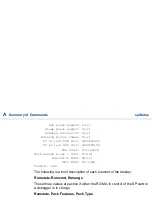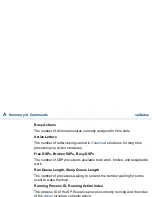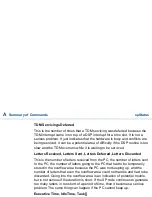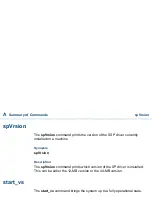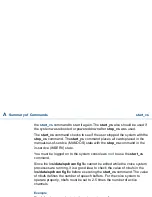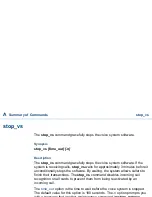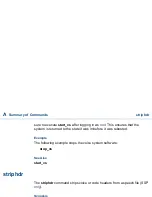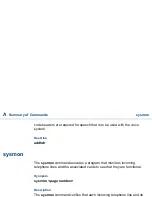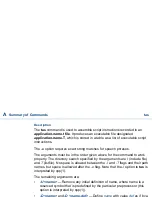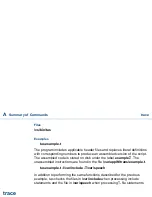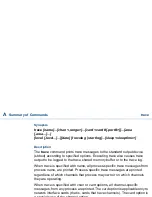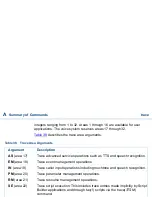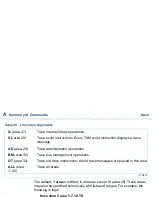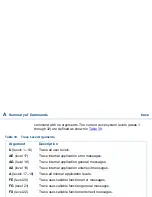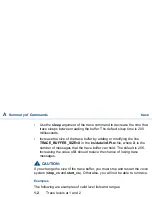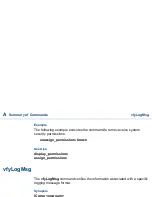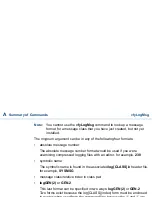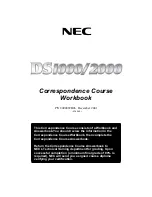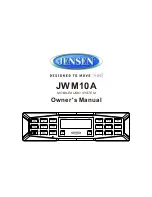
A
Summary of Commands
tas
UCS 1000 R4.2 Administration 585-313-507
Issue 3 April 2000 600
Description
The tas command is used to assemble script instructions recorded in an
application-name.t file. It produces an executable file designated
application-name.T, which is stored in a table as a list of executable script
instructions.
The
-e
option requires exact string matches for speech phrases.
The arguments must be in the order given above for the command to work
properly. The directory search specified by the arguments are
I
(include file)
and
T
(listfile). No space is allowed between the
-I
and
-T
flags and their path
names, but space is allowed after the
-e
flag. Note that the
-I
option to tas is
interpreted by cpp(1).
The remaining arguments are:
•
-U <name>
— Remove any initial definition of name, where name is a
reserved symbol that is predefined by the particular preprocessor (this
option is interpreted by cpp(1)).
•
-D <name>
and
-D <name-def>
— Define
name
with value
def
as if by a
#define. If no
-def
is given,
name
is defined with value 1. The
-D
option
has lower precedence than the
-U
option. That is, if the same name is
used in both a
-U
option and a
-D
option, the name is undefined
regardless of the order of the options (this option is interpreted by cpp(1)).
•
-Y <dir>
— Use directory
dir
in place of the standard list of directories
when searching for #include files (this option is interpreted by cpp(1)).


